How a Simple Gratitude Jar Can Impact Your Elementary Classroom and Steps to Make One
For classrooms moving at a busy pace, a gratitude jar offers a thoughtful way to encourage daily reflection. This easy-to-make tool invites students to slow down, reflect, and express their gratitude, turning everyday moments into opportunities for appreciation.
By encouraging regular gratitude, you’ll foster a more positive, connected classroom environment – and it all starts with a jar.
Curious how?
Let’s explore how this small act of gratitude can make a big difference in your classroom, especially for students in the second plane of development, one note at a time.
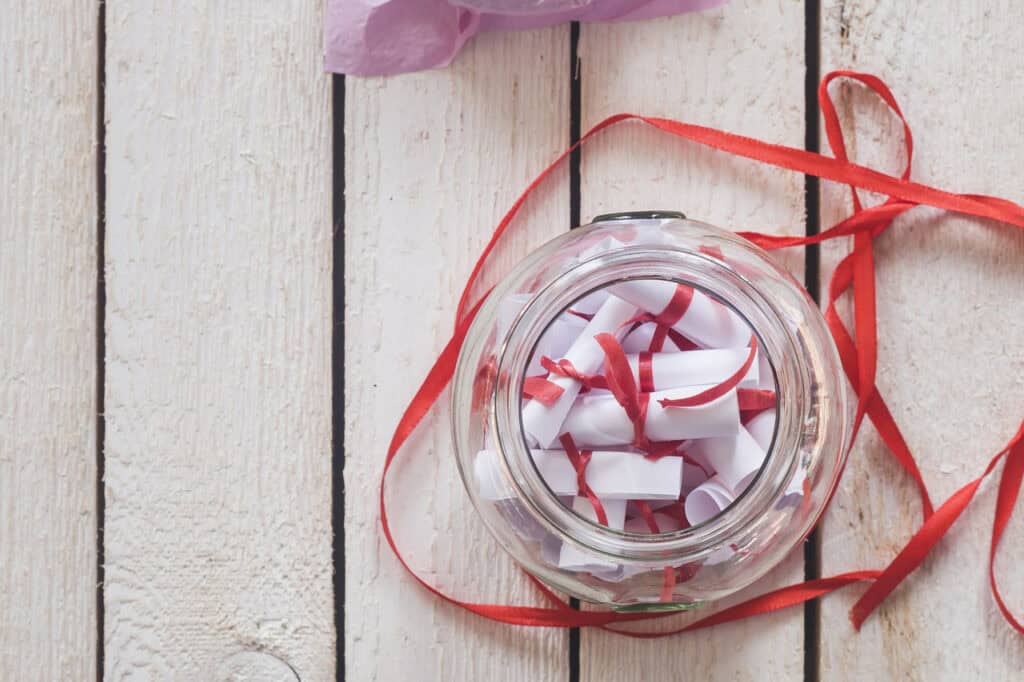
What is a Gratitude Jar?
A gratitude jar is any container – be it a mason jar, a decorated box, a bucket, or even a simple cup – where students can place anonymous notes or even short quotes, expressing what they’re thankful for. Each note captures a small moment, a kind gesture, or something that made them smile.
The jar gradually fills with positive reflections, becoming a visible reminder of all the good things in their lives, big or small. This simple practice helps shift their focus away from negativity, encouraging mindfulness and a moment to appreciate the positives.
As they write down their thoughts, students are not only practicing gratitude but also building emotional awareness, giving them a meaningful way to reflect on their day. It’s learning in disguise!
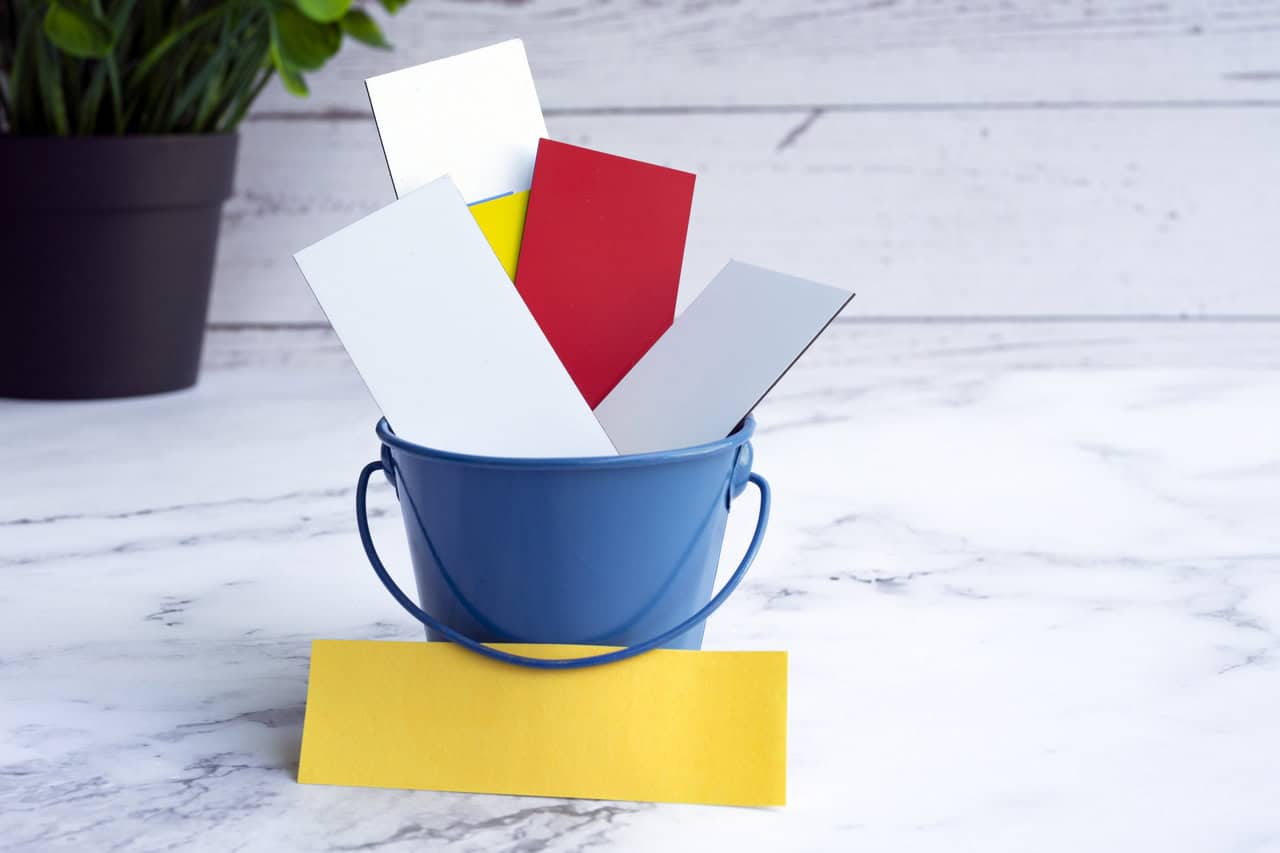
The Impact of a Gratitude Jar
A gratitude jar is a transformative tool for creating a positive classroom atmosphere and fostering teachable moments. Here are some key ways it can make a difference for your elementary learning environment:
Promotes Positivity
Regularly acknowledging what they are grateful for helps students develop a positive mindset, which can lead to improved mental health and resilience. By focusing on the good, students learn to reframe challenges and adopt a more optimistic outlook.
Enhances Classroom Community
Sharing gratitude encourages connection among students. It fosters an environment where everyone feels valued and appreciated, building stronger relationships and a sense of belonging within the classroom.
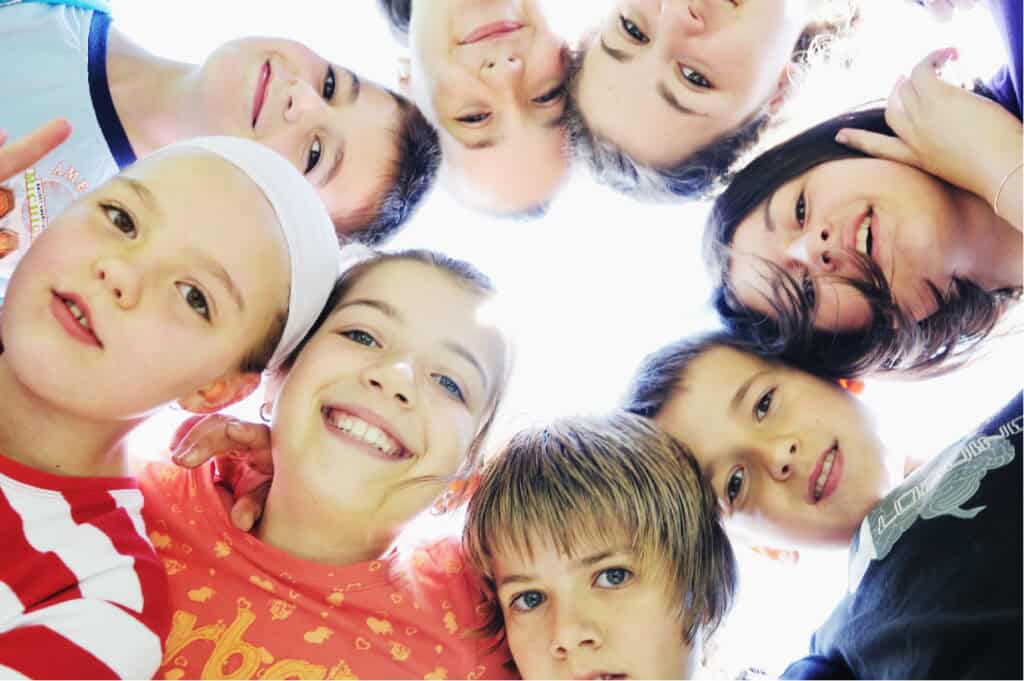
Encourages Reflection
Writing gratitude notes prompts students to think critically about their experiences, teaching them the importance of reflection. This practice helps them identify and appreciate the meaningful moments in their day that might otherwise go unnoticed.
Builds Empathy
When the notes in the gratitude jar are real aloud during a classroom meeting, students gain insight into their peers’ lives, promoting empathy and understanding. Seeing what others value creates a deeper sense of community and encourages kindness within the group.
Supports Emotional Regulation
The process of expressing gratitude can help students manage their emotions, especially during stressful times. By focusing on the positive, students learn a valuable strategy for shifting their mindset and calming their emotions, which can improve classroom dynamics.
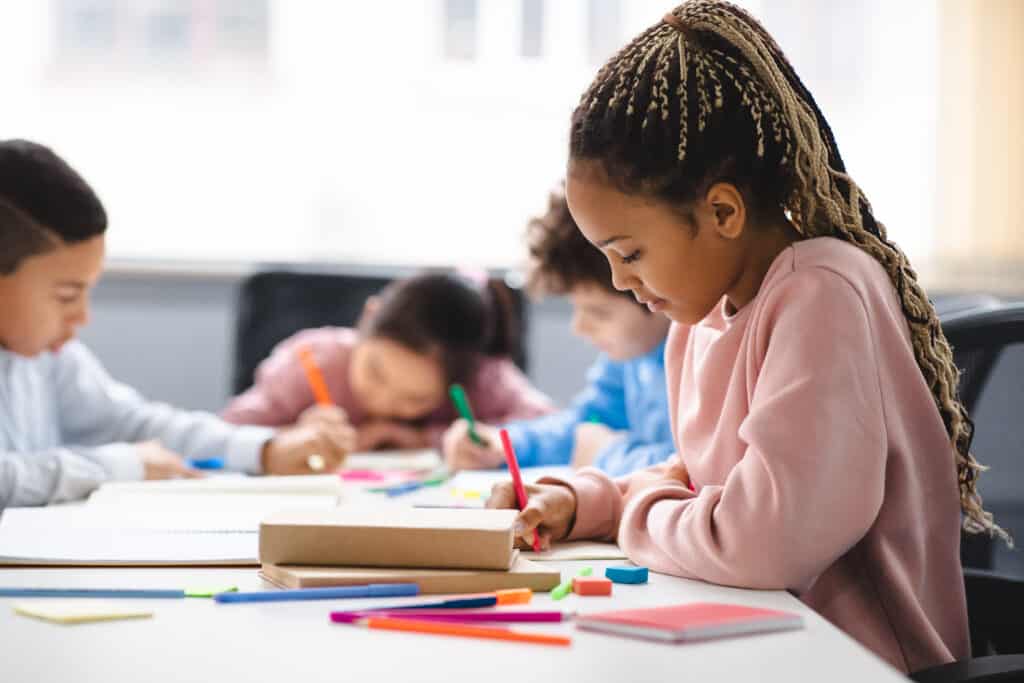
A gratitude jar is an easy addition to your classroom routine, yet its effects can be profound, fostering empathy, encouraging reflection, and creating a positive, supportive community.
💡 Looking for an engaging and fun activity to teach gratitude?
Try our Gratitude Bingo game! It’s the perfect way for kids to practice appreciation while enjoying the excitement of completing meaningful tasks. There are so many benefits to playing games in the classroom, so grab your copy of Gratitude Bingo today!
Find it on Teachers Pay Teachers or Etsy!
Steps to Create Your Own Gratitude Jar
Setting up a gratitude jar is a simple and rewarding process. It allows students to engage actively in recognizing the positive aspects of their lives.
Follow these easy steps to create a meaningful gratitude jar that will encourage appreciation and reflection among your students.
Choose Your Jar
Find a clear jar, container, or even a box that will be easily visible in your classroom or home. Clear jars work best as they let children watch their gratitude grow over time, but any container will do.
You can make this a collaborative activity by decorating the jar as a group, allowing students to take ownership and create a sense of excitement around the project.
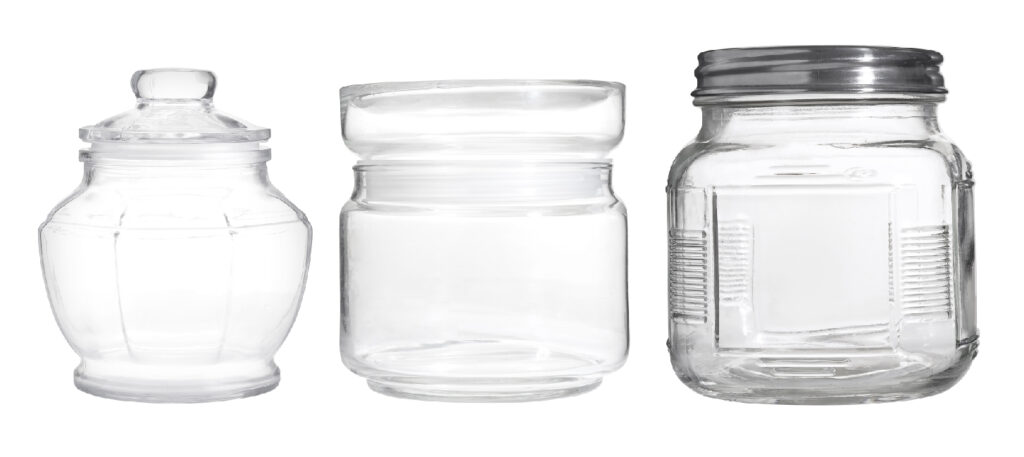
Gather Supplies to Decorate Your Gratitude Jar
Get creative with decorating your gratitude jar! One year, my students decided to paint the jar, but after a few months, the paint started peeling. Not to be deterred, these resourceful problem-solvers found a new approach – they covered the jar with wrapping paper and added bows for a fresh and fun look.
When decorating, gather supplies like stickers, colourful tape, wrapping paper, or fabric to personalize the jar. Set up a designated spot for the supplies, along with plenty of small slips of paper, pens, and markers, so students can easily write their notes of gratitude and add them whenever they’re inspired!
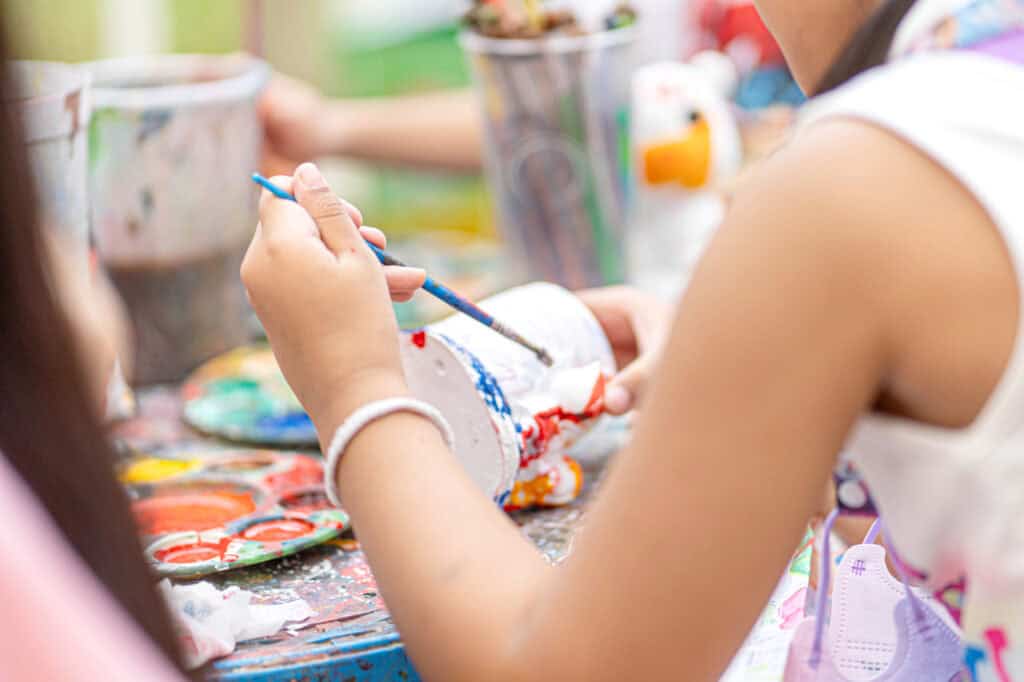
Set Ground Rules
Have a discussion with your students about the purpose of the gratitude jar. Explain that the jar is a place for positive reflections – encouraging them to write down things they’re thankful for, whether it’s something big like a fun field trip or something small like a friend lending them an eraser. Remind them to be respectful and sincere in their contributions.
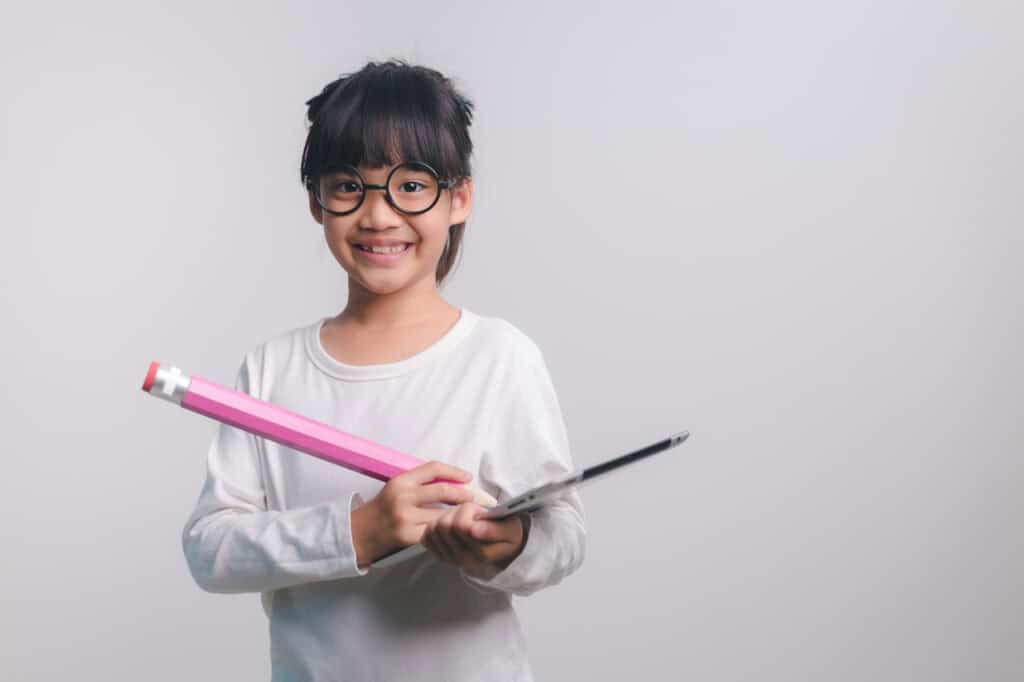
Incorporate the Gratitude Jar into Your Routine
Make the gratitude jar a regular part of your classroom routine by modeling it and carving out specific times for students to participate. Set aside moments each day or week – like during circle time, at the end of the day, or during your end-of-week meetings – for students to reflect and add their notes of gratitude to the jar.
With consistency, this simple activity becomes a natural habit, and you’ll soon find students initiating it themselves whenever gratitude strikes them!
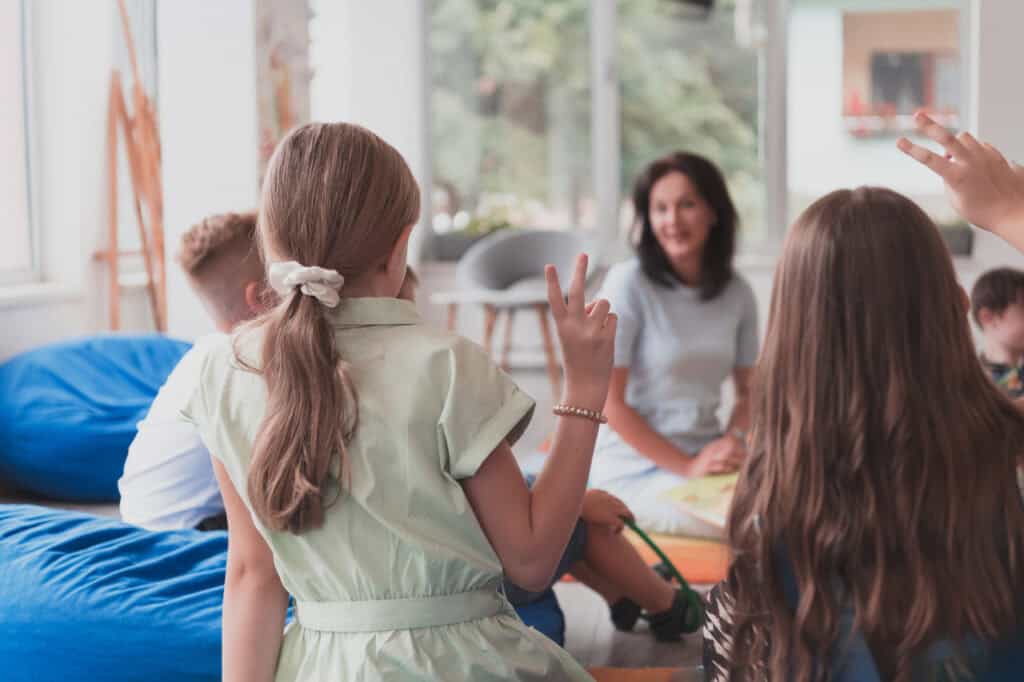
Celebrate the Gratitude in the Jar
A wonderful way to celebrate gratitude is by incorporating it into classroom meetings, like a peace circle, at the end of the week. Set aside time to read the notes aloud, allowing students to express and acknowledge all the gratitude that has accumulated throughout the week.
This ritual not only reinforces the importance of gratitude but also strengthens the classroom community. By sharing these positive moments together, you encourage students to continue appreciating one another and foster a culture of gratitude in your classroom.
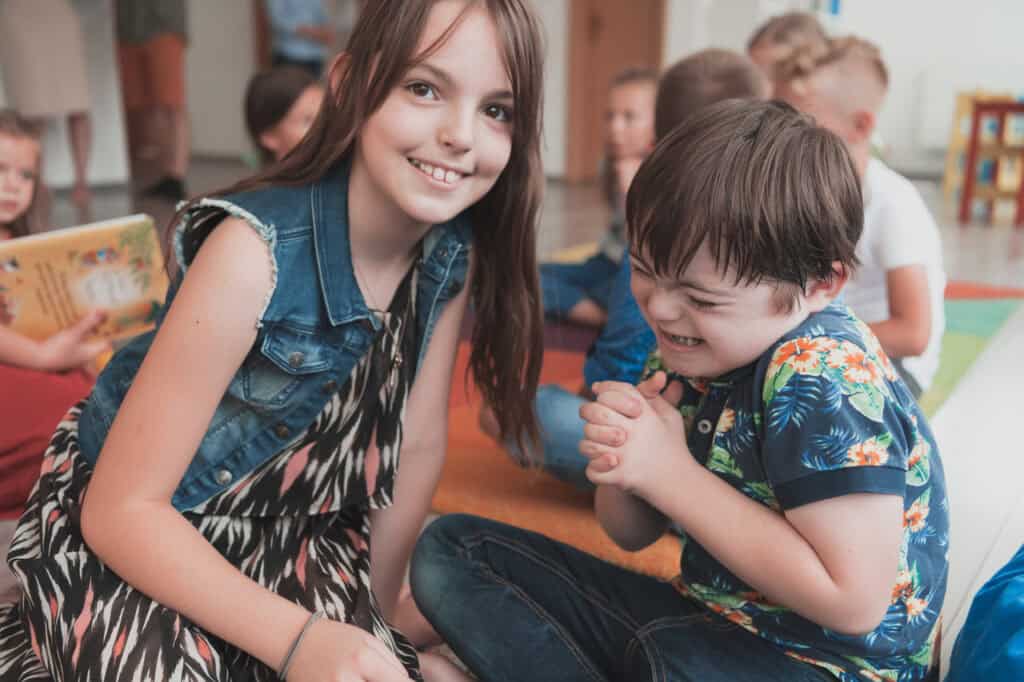
Gratitude Jars Aren’t Just for Classrooms
A gratitude jar isn’t just a powerful tool for the classroom, it’s also a wonderful addition to any household. Implementing a gratitude jar at home can foster a positive atmosphere, strengthen family bonds, and encourage everyone – from kids to adults – to appreciate the little moments that often go unnoticed.
By incorporating a gratitude jar into your daily routine, families can take a few moments each day or week to reflect on what they’re thankful for, promoting mindfulness and emotional well-being for everyone in the household.

Having a designated spot for your gratitude jar in your home, whether it’s on the kitchen counter, a living room shelf, or in the kids’ play area, makes it easy for family members to contribute regularly. Whether it’s expressing gratitude for a fun family outing, acknowledging a helping hand with chores, or simply appreciating each other, the jar becomes a daily reminder of the positive things in life.
Over time, this practice helps shift the focus away from daily stresses and towards the abundance of small, joyful moments. By making gratitude a shared family activity, you’ll cultivate a home environment filled with positivity, understanding, and connection – a habit that’s as beneficial for kids as it is for parents.

The Wrap-Up: A Gratitude Jar Can Impact Your Elementary Classroom
Introducing a gratitude jar into your elementary classroom is a simple yet impactful way to foster positivity, empathy, and a sense of community. By encouraging students to reflect on their gratitude and share it through small notes placed in the jar, you help create a supportive environment that enhances emotional well-being.
Ready to bring this positive change to your classroom?
Gather your supplies, set the tone, and watch as those good vibes start to fill the room!
Be sure to Pin 📌 this blog for reference

Keep Kids Learning with The Educational Activities in These Blogs:
11 Ways to Use Our Roll A Story Dice Game
Book Report Ideas for 5th Grade that Spark Imagination
31 Fun Summer Reading Activities Elementary Students Will Love
57 Epic Montessori-Aligned Spring Break Activities for Your Kids
Rebus Puzzles for Kids: A Comprehensive Riddle-Solving Guide
The Best Neighborhood Walk Scavenger Hunt and Different Ways to Use It
Elevate Elementary Math Skills with This Exciting Math Card Game
Score Big with These 9 Super Bowl Classroom Activities
27 Educational YouTube Channels to Prevent Summer Learning Loss



